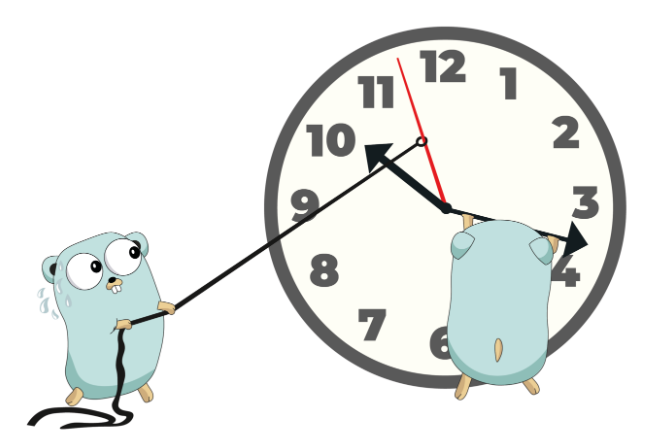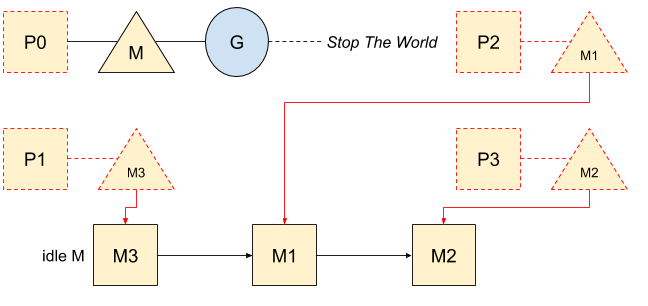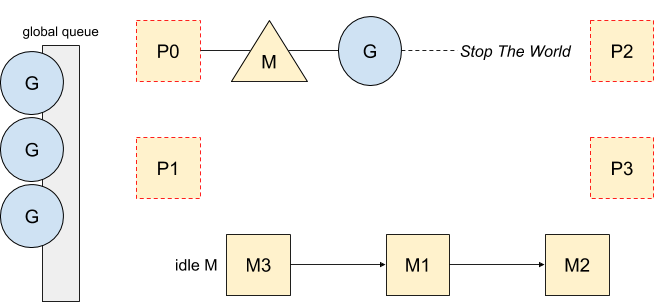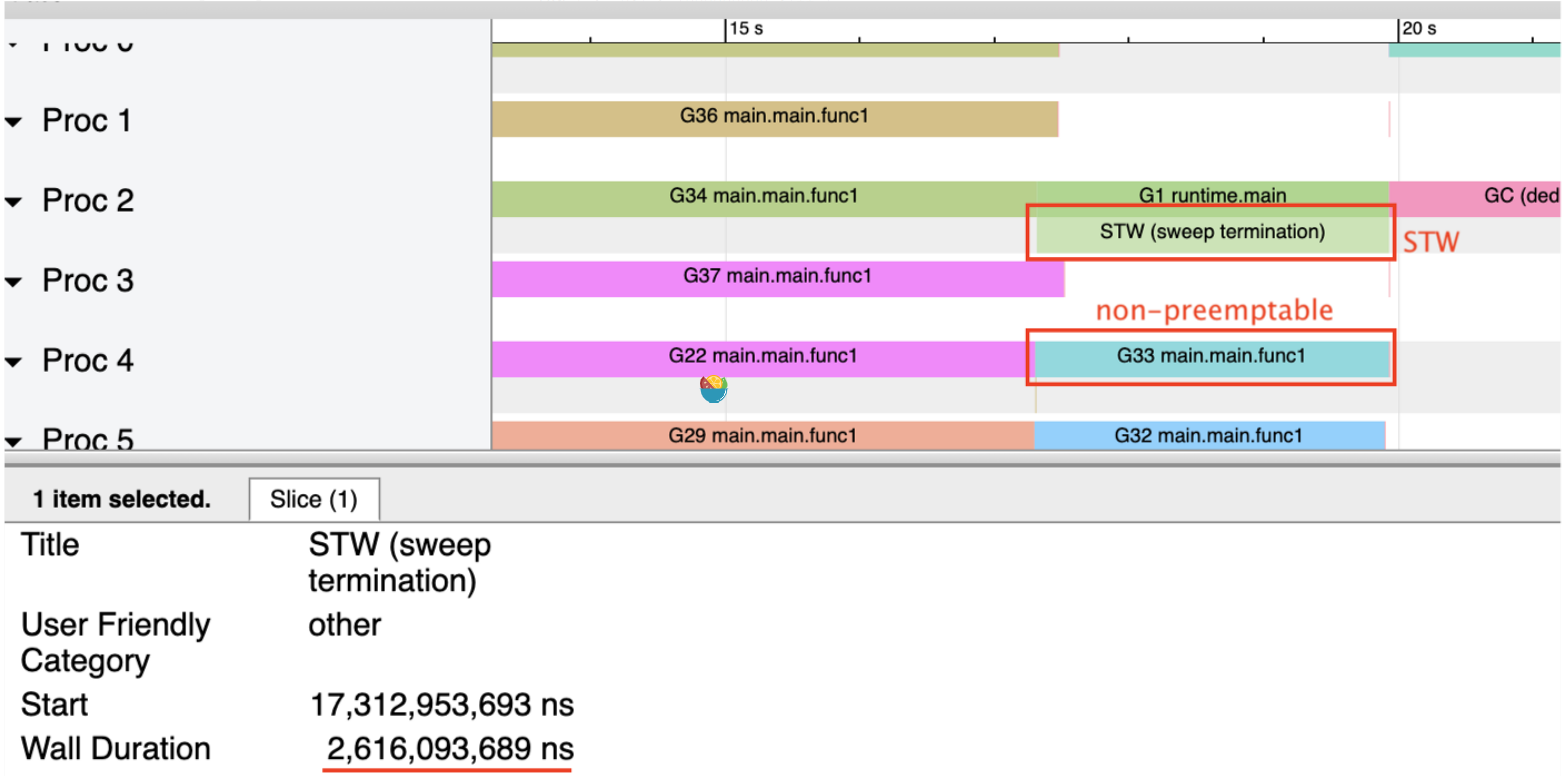go 怎样做 stw

原文链接: Go: How Does Go Stop the World?:
Author : Vincent Blanchon
本文基于 go 1.13
在垃圾回收算法中,Stop The Word(STW)是一个很重要的概念,他会中断程序运行,添加写屏障,以便扫描内存 ,现在一起来看看它内部的原理以及可能存在的问题.
STW
停止程序运行意味着停止所有运行态的goroutines,一个简单的例子:
运行垃圾回收算法将触发两个阶段的STW
有关垃圾回收的更多细节,请参考同作者的另外一篇文章“Go: How Does the Garbage Collector Mark the Memory?
STW的步骤
第一步,抢占所有正在运行的goroutines

第二步,一旦 goroutines被抢占,正在运行的goroutines将在安全的地方暂停,然后所有的p[1]都将被标记为暂停,停止运行任何代码。

第三步,然后,go调度器将M[2]与P分离,并且将M放到空闲列表里面。

对于在每个M上运行的Goroutines,它们将在全局队列[3]>中等待:

那么,一旦所有的goroutines都停止了,那么唯一活跃的goroutines (垃圾回收goroutines)将会安全的运行,并且在垃圾回收完成后,重新拉起所有的goroutines。具体情况,可以通过 go trace查看。

System calls
STW时期可能会影响系统调用,因为系统调用可能会在stw时期返回,通过密集执行系统调用的程序来看看怎样处理这种情况,
他的trace情况。

系统调用在STW时期返回,但是现在已经没有P在运行了。所以他会放到全局队列里面,等待STW结束后再运行。
Latencies
STW的第三步将所有的M与P分离。然而,go将等待调度程序运行、系统调用等自动停止。等待goroutine被抢占应该很快,但是在某些情况下会产生一些延迟,下面是一个极端的例子:
STW时长达到了2.6S

没有函数调用的goroutine将不会被抢占,并且它的P在任务结束之前不会被释放。这将迫使STW等待他, 有几种解决方案可改善循环中的抢占,有关其的更多信息,可以查看作者另外一篇文章 [Go: Goroutine and Preemption).












评论